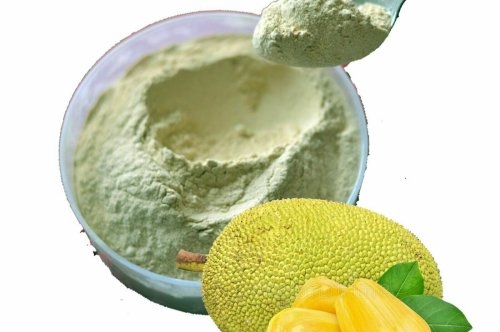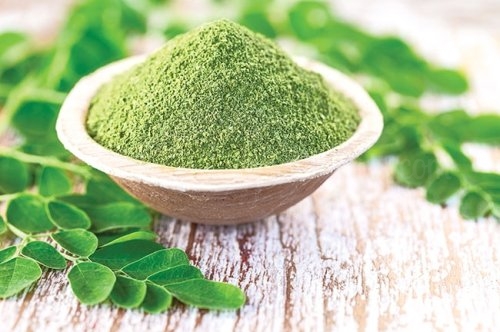
What is Nutmeg?
Nutmeg is a spice made from the seed of the nutmeg tree (Myristica fragrant), a native Indonesian evergreen tree that is the source of two popular spices. Nutmeg is the inner seed, while mace is the red, lace-like substance that covers the seed. Nutmeg is a quintessential autumn spice, frequently found in fall desserts and beverages. It can also be used in savory dishes, such as butternut squash soup, and pairs well with cream- or cheese-based recipes like a vegetable gratin.
The most important commercial species is the common, true or fragrant nutmeg, Myristica fragrans (Myristicaceae), native to the Moluccas (or Spice Islands) of Indonesia. It is also cultivated on Penang Island in Malaysia, in the Caribbean, especially in Grenada, and in Kerala, a state formerly known as Malabar in ancient writings as the hub of spice trading, in southern India.
Nutmeg trees grow best on tropical, humid islands with sandy soil. The Spice House's premium nutmeg and mace come from the Caribbean island of Grenada, where it is still harvested by hand.
Nutmeg Vs Mace
While nutmeg is the inner seed of the nutmeg tree, it grows in close proximity to the mace, or outer coating. Mace can be harvested and used as a spice just as nutmeg can, but the similarities end there. Although these two elements grow very closely, they actually have many differences and cannot be used interchangeably. Red in color when ground, mace is slightly spicier than nutmeg, which has a delicate sweet flavor. Often described as a cross between cinnamon and pepper, mace is rarely used in the same dishes at nutmeg.
Nutmeg Powder
Nutmeg powder has a warm, sweet flavor, which is why it's commonly added to desserts, including pies, cakes, cookies, breads, fruit salads, and custards. It also works well in savory, meat-based dishes, such as pork chops and lamb curry.
How to growing Nutmeg?
The nutmeg tree thrives in a hot, moist climate and in well-drained soil with partial shade. Shade is required for the first two to three years. They need year-round water, but should not be kept wet, as the roots will rot.
Nutmeg is propagated through seeds. To obtain nutmegs both sexes should be planted. Male and female type trees are required for pollination and fruit set. One male is sufficient to pollinate ten to twelve females. Instead of a nutmeg male, a cocum male tree is enough to pollinate nutmegs. Dark brown seeds from fruits that have split open should be used and have to be sown as soon as possible. The soil must be enriched with mixture of well-composted manure, topsoil, and coarse sand. Germination takes between four and eight weeks. The seedlings should remain in the shade for six to eight months. The seedlings can be planted in the field at the beginning of the rainy season. Shading can be gradually removed after two to three years.
Pruning will help to maintain flower, fruit and seed production.
Climate for growing Nutmeg
Nutmeg thrives well in warm humid conditions in locations with an annual rainfall of 150 cm and more. It grows well up to about 1300 m above mean sea level. Areas with clay loam, sandy loam and red laterite soils are ideal for its growth.
Nutmeg Harvesting
The trees will begin to bear fruit from around seven to nine years. Yield depends on the size and age of the tree. The yield will increase considerably and continue bearing for seventy or eighty years. The fruits are ready for harvest in about 9 months after flowering. The peak harvesting season is during June-August. The fruit of nutmeg tree, which is similar in colour and size to apricot, when ripe splits into two halves exposing a purplish-brown shiny seed surrounded by a brilliant red aril. Usually the fruits are allowed to split and fall to the ground before harvesting.
Uses of Nutmeg
Whole nutmeg can be freshly ground and added to dishes with a micro plane or grater, but the spice is also available already ground.
- Nutmeg is a common ingredient in many cuisines, including European and Indian.
- There are many ways to add nutmeg to your diet, including.
- Add it to coffee, hot chocolate, tea, or warm milk.
- Use it to season vegetables such as cauliflower and sweet potato.
- Sprinkle over oatmeal or other breakfast cereals.
- Sprinkle over fruit for an added kick.
- Bake with it.
- Nutmeg is a key ingredient in many baked goods.
- Add to seasonal beverages such as eggnog, mulled cider, and mulled wine.
- Use it in fall dishes, such as ones that feature pumpkin or other winter squashes.
Nutrition
Nutmeg is rich in fiber, which helps keep the digestive system healthy and prevent blood sugar from spiking.
It’s also a source of:
- Vitamin A
- Vitamin C
- Vitamin E
- Manganese
- Magnesium
- Copper
- Phosphorous
- Zinc
- Iron
Benefits of Nutmeg
Nutmeg is a rich source of antioxidants, which help protect against the signs of aging and serious conditions such as cancer, heart disease, and liver disease. Nutmeg oil is used in several dental products.
- Contains powerful antioxidants.
- Has anti-inflammatory properties.
- May boost libido.
- Has antibacterial properties.
- May benefit various health conditions.
- Is versatile and delicious.
- Regulates Blood Pressure.
- Improves brain activity.
- Supports skin health.
- Improves Digestion.
- Supports Hair Growth.
- Improves Liver Health.
- Maintains Cholesterol levels.
- Supports Weight Loss.
- Kills harmful bacteria.
- It helps you get rid of the bad breath.
 English
English
 Russian
Russian  Arabic
Arabic  French
French  Español
Español  Turkish
Turkish  German
German 







